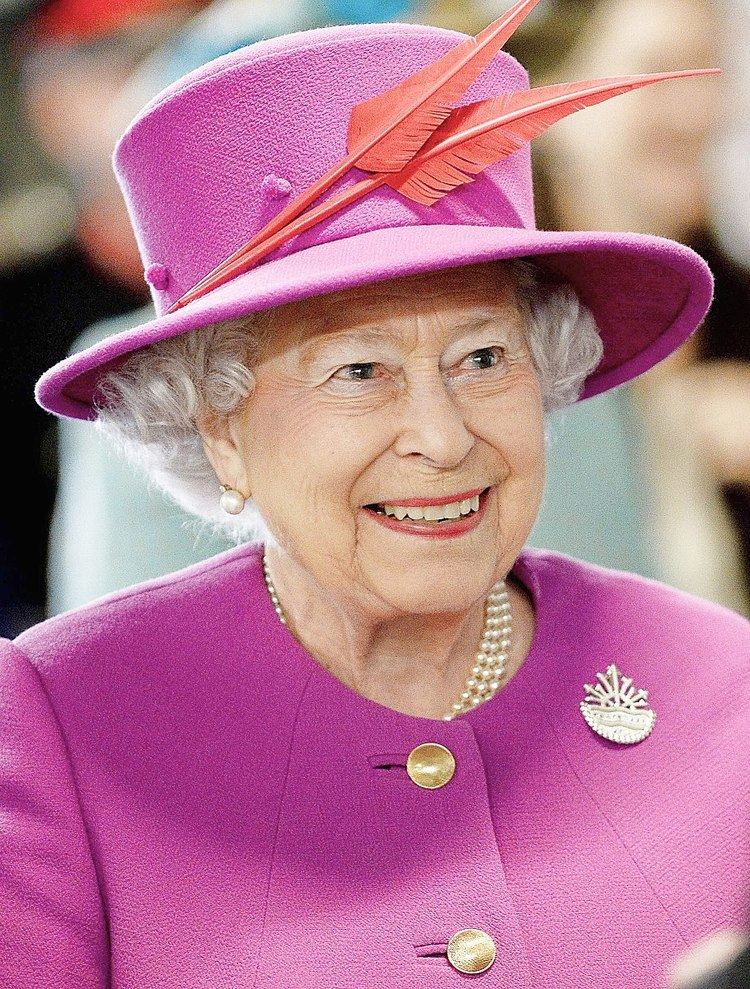 | ||
The following is a list, ordered by length of reign, of the monarchs of the United Kingdom of Great Britain and Northern Ireland (1927–present), the United Kingdom of Great Britain and Ireland (1801–1927), the Kingdom of Great Britain (1707–1801), the Kingdom of England (871–1707), the Kingdom of Scotland (878–1707), the Kingdom of Ireland (1542–1800), and the Principality of Wales (1216–1542).
Contents
Queen Elizabeth II became the longest-reigning British monarch on 9 September 2015 when she surpassed the reign of her great-great-grandmother Victoria. On 6 February 2017 she became the first British monarch to celebrate a sapphire jubilee, commemorating 65 years on the throne.
Overall
These are the ten longest reigning monarchs in Britain for whom there is reliable recorded evidence.
The longest claim by a pretender was that of James Francis Edward Stuart (the "Old Pretender"), who was the Jacobite pretender to the thrones of England, Scotland and Ireland for 64 years, 3 months, and 16 days (17 September 1701 – 1 January 1766).
Elizabeth II
On 9 September 2015 (at the age of 7009282080880000000♠89 years, 141 days), Elizabeth II became the longest-reigning British monarch and the longest-reigning female monarch in world history. On 23 May 2016 (at the age of 7009284294880000000♠90 years, 32 days), her reign surpassed the claimed reign of James Francis Edward Stuart (the "Old Pretender"). On 13 October 2016 (at the age of 7009285530400000000♠90 years, 175 days), she became the world's longest-reigning current monarch (and the world's longest-serving current head of state) after the death of Bhumibol Adulyadej (Rama IX), King of Thailand.
Should she still be reigning on –
United Kingdom
On 1 January 1801 the Kingdom of Great Britain united with the Kingdom of Ireland to become the United Kingdom of Great Britain and Ireland, becoming the United Kingdom of Great Britain and Northern Ireland by Act of Parliament in 1927 following the creation of the Irish Free State in 1922.
Great Britain
On 1 May 1707, under the Acts of Union 1707, the Kingdom of England united with the Kingdom of Scotland as the Kingdom of Great Britain.
England
Includes English monarchs from the installation of Alfred the Great as King of Wessex in 871 to Anne (House of Stuart) and the Acts of Union on 1 May 1707, when the crown became part of the Kingdom of Great Britain.
Scotland
Includes Scottish monarchs from the installation of Kenneth I (House of Alpin) in 848 to Anne (House of Stuart) and the Acts of Union on 1 May 1707, when the crown became part of the Kingdom of Great Britain.
Ireland
The High King of Ireland (846–1198) was primarily a titular title (with the exception of Ruaidrí Ua Conchobair who was regarded as the first "King of Ireland"). The later Kingdom of Ireland (1542–1800) came into being under the Crown of Ireland Act 1542, the long title of which was "An Act that the King of England, his Heirs and Successors, be Kings of Ireland". In 1801 the Irish crown became part of the United Kingdom of Great Britain and Ireland.
Gwynedd
The Principality (or Kingdom) of Gwynedd (5th century–1216) was based in northwest Wales, its rulers were repeatedly acclaimed as "King of the Britons" before losing their power in civil wars or Saxon and Norman invasions. In 1216 it was superseded by the title Principality of Wales, although the new title was not first used until the 1240s.
Wales
The Principality of Wales (1216–1542) was a client state of England for much of its history, except for brief periods when it was de facto independent under a Welsh Prince of Wales (see House of Aberffraw). From 1301 it was first used as a title of the English (and later British) heir apparent. The Laws in Wales Acts 1535–1542 formally incorporated all of Wales within the Kingdom of England.
The longest-serving "Prince of Wales" was Albert Edward, later Edward VII, who served for 59 years, 1 month and 14 days. Charles, the longest-serving heir apparent, will surpass this record if he remains the Prince until 9 September 2017, exactly two years after his mother passed Queen Victoria's record.
